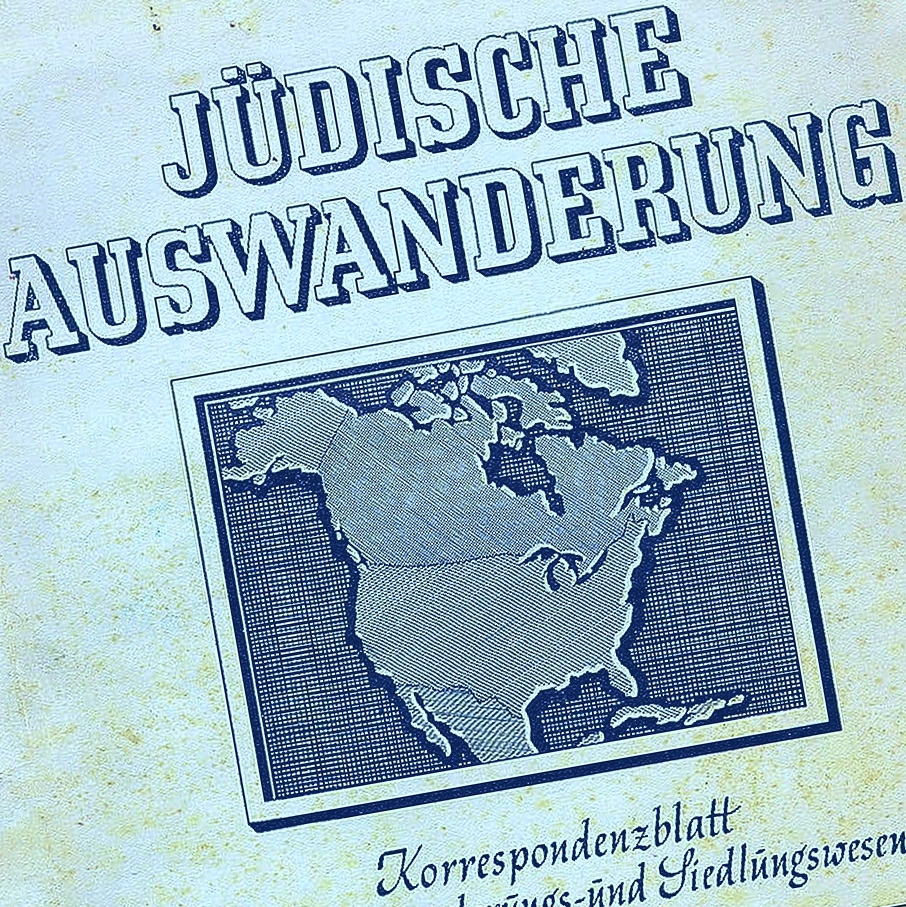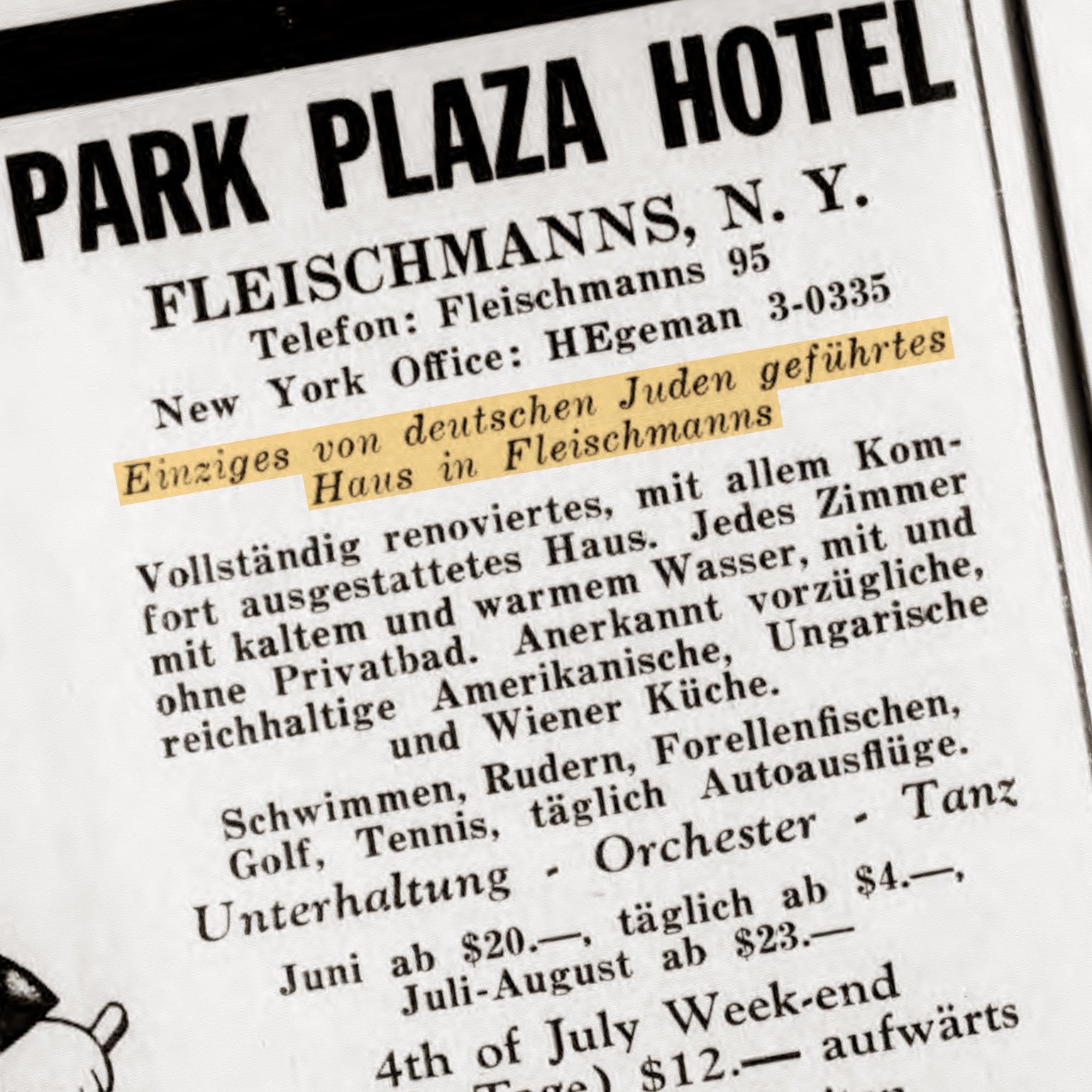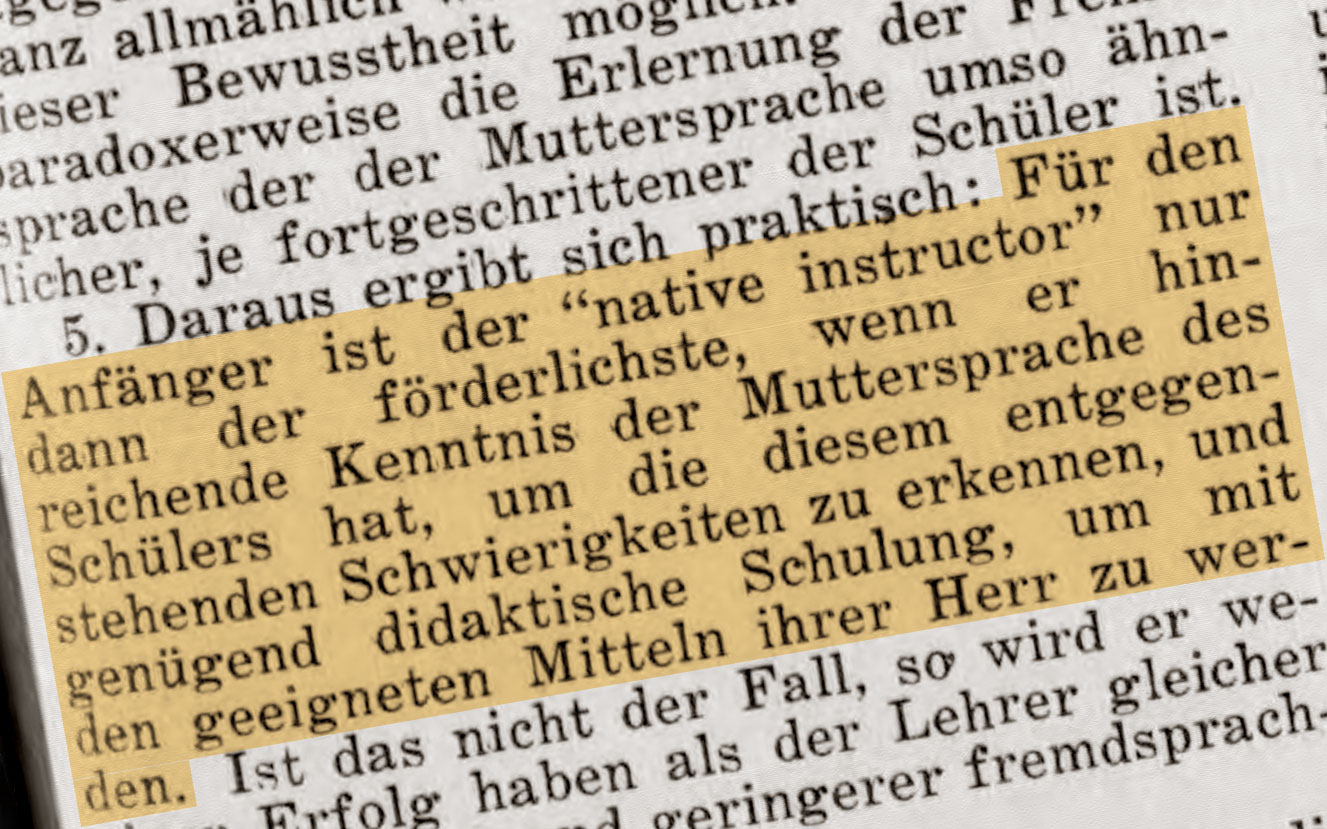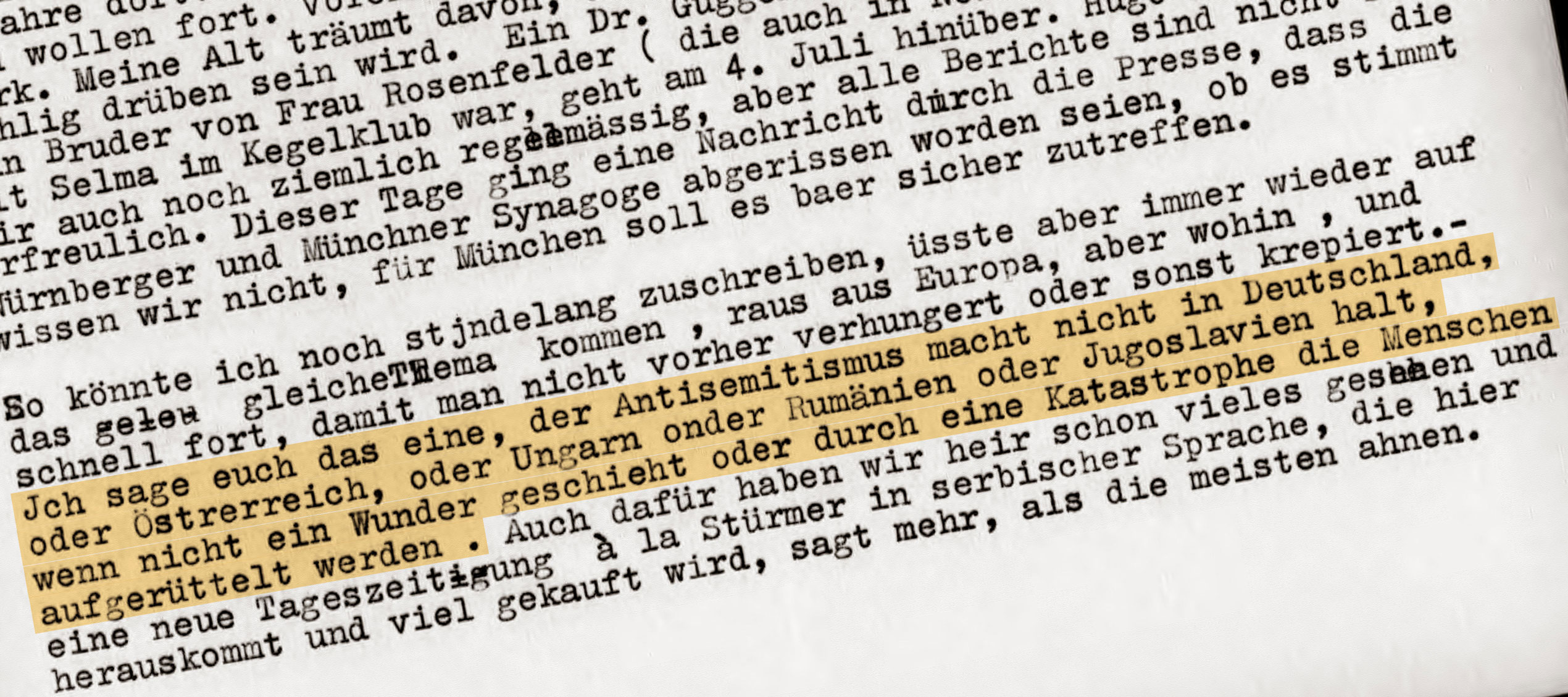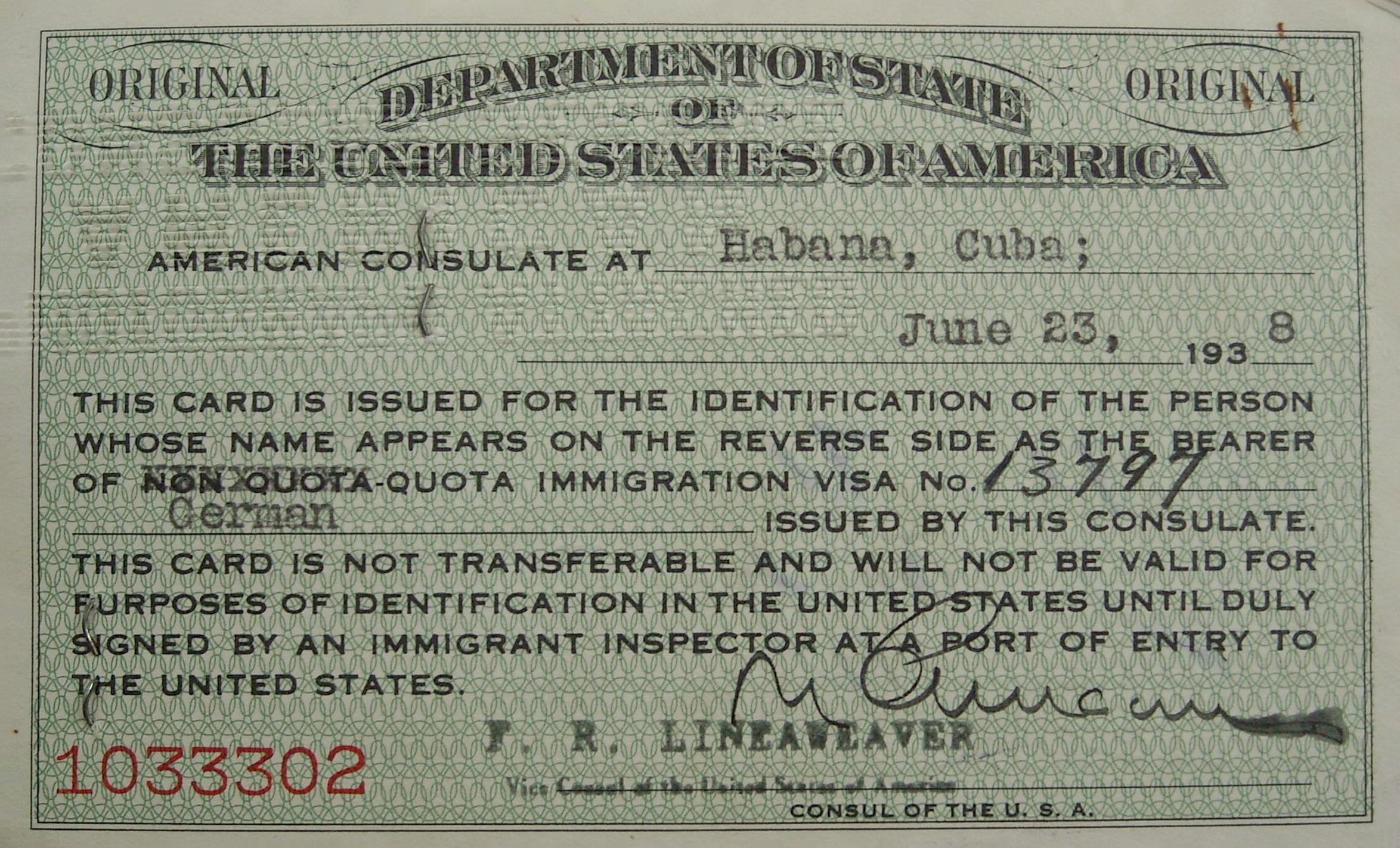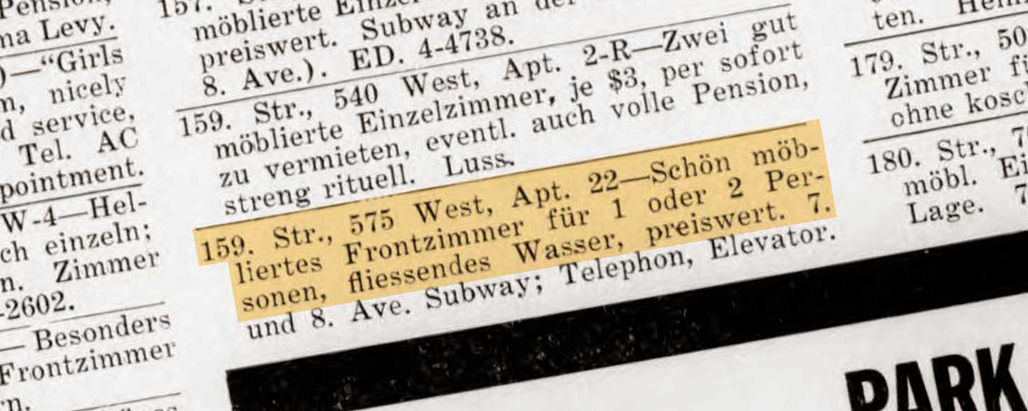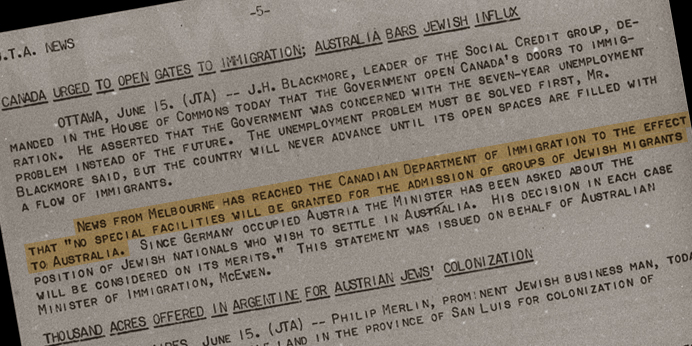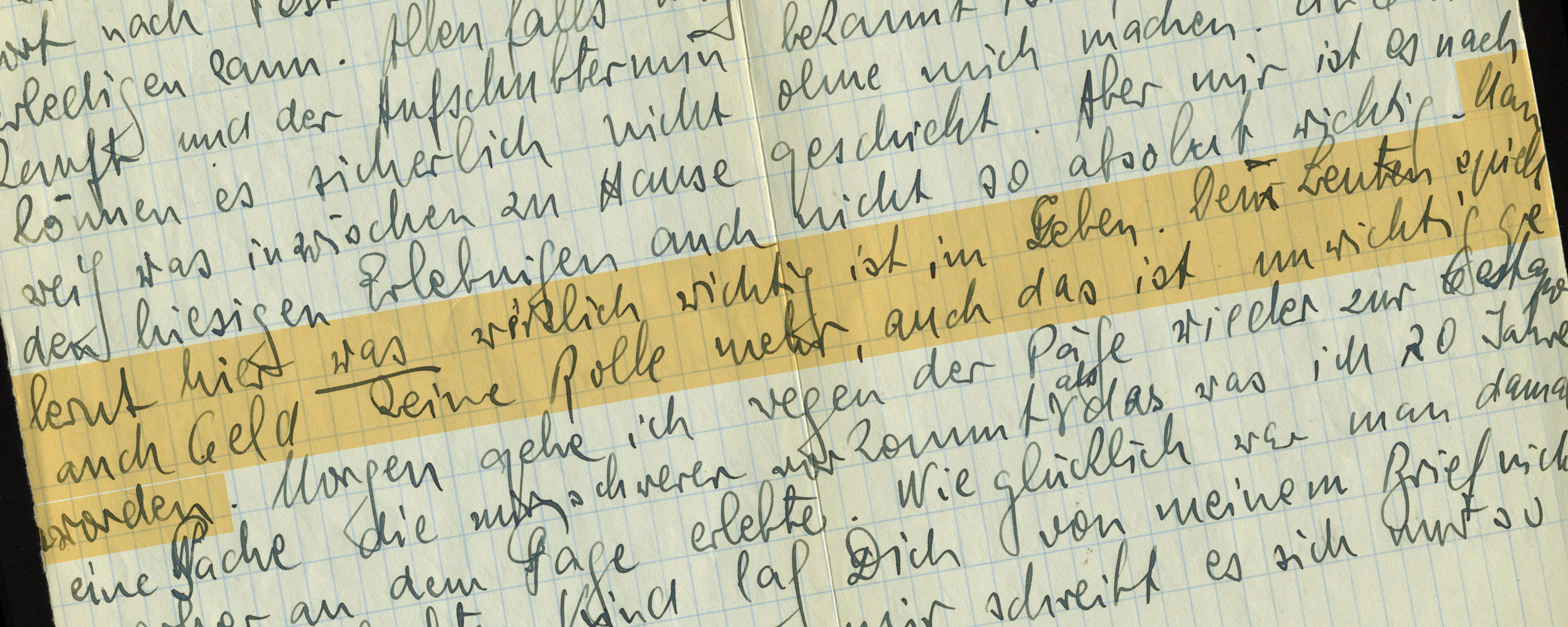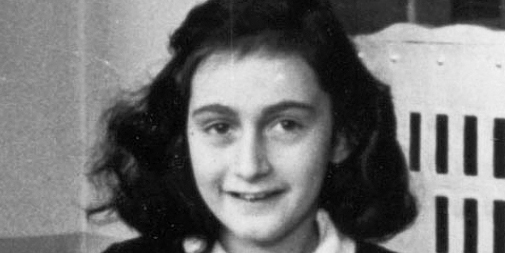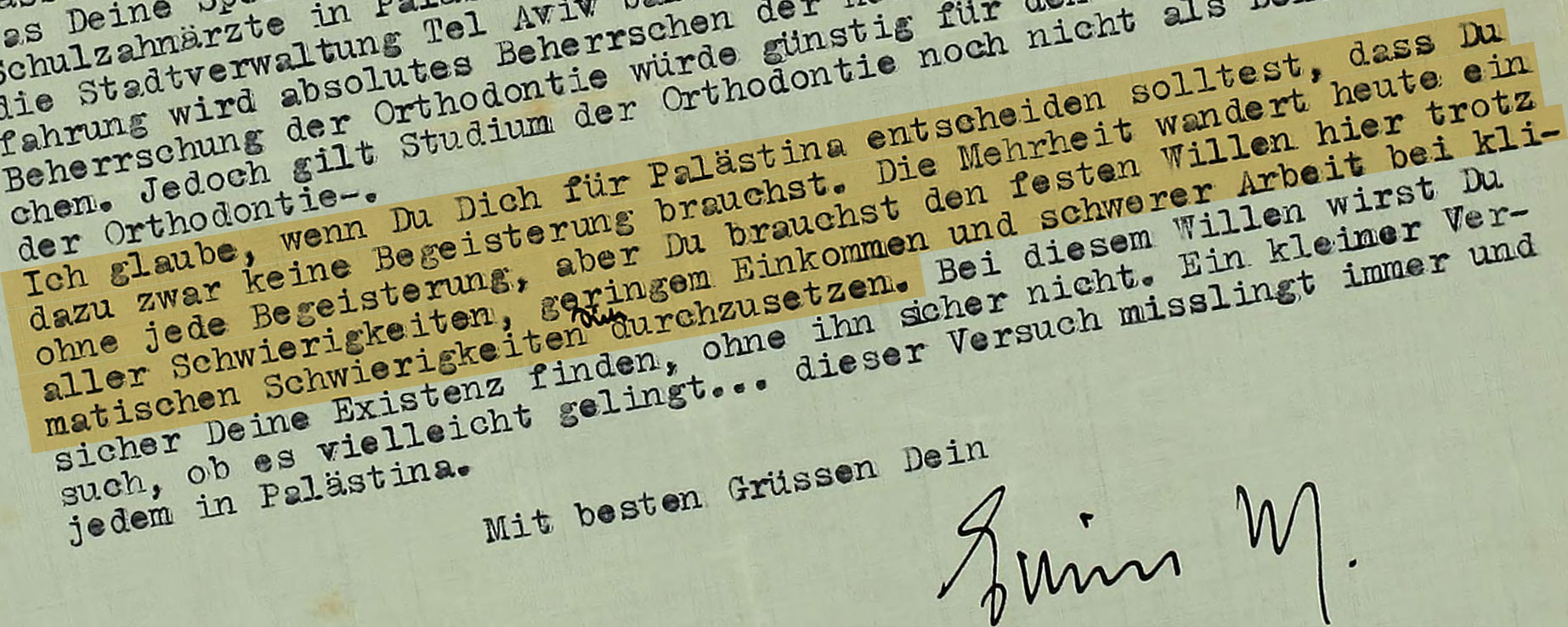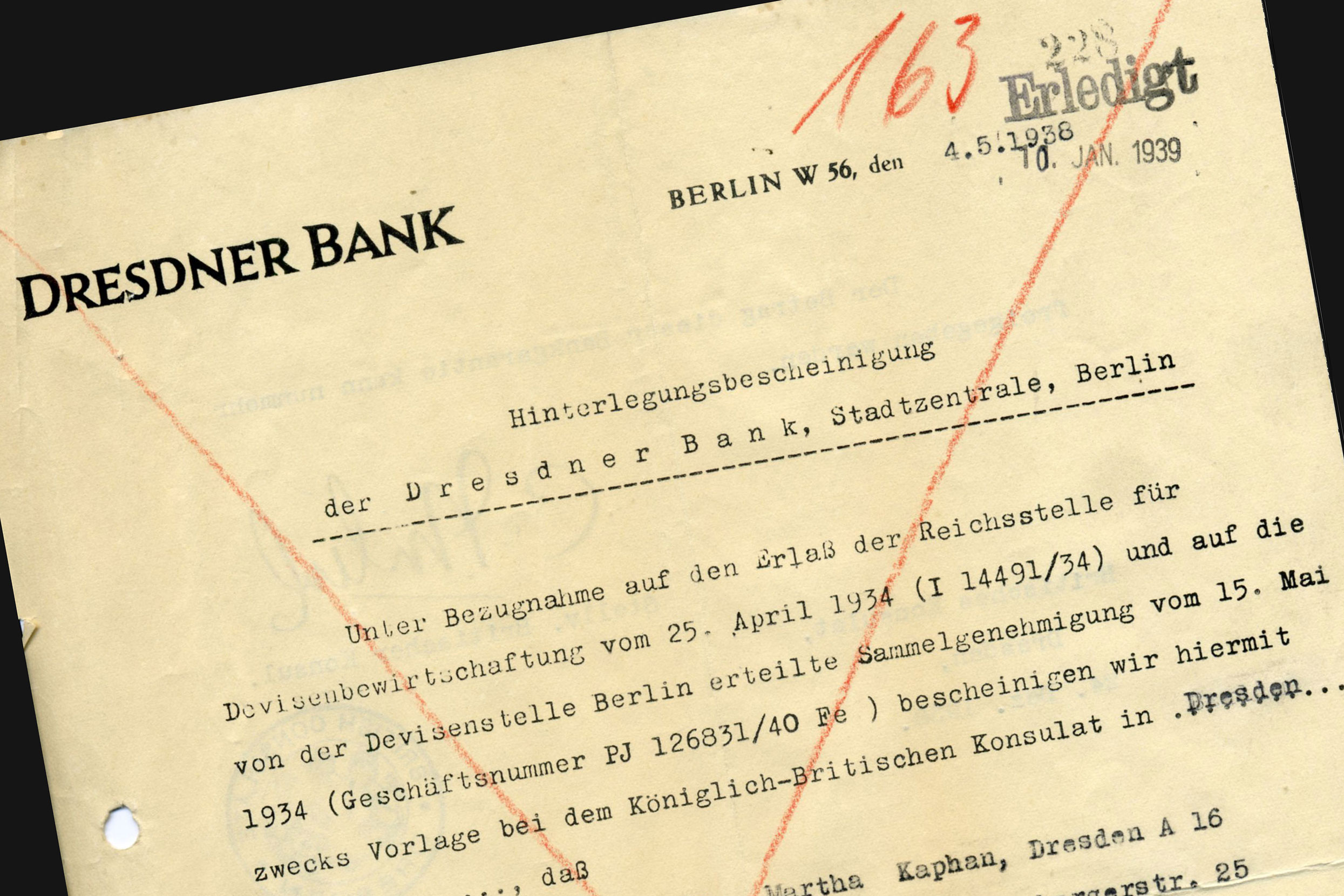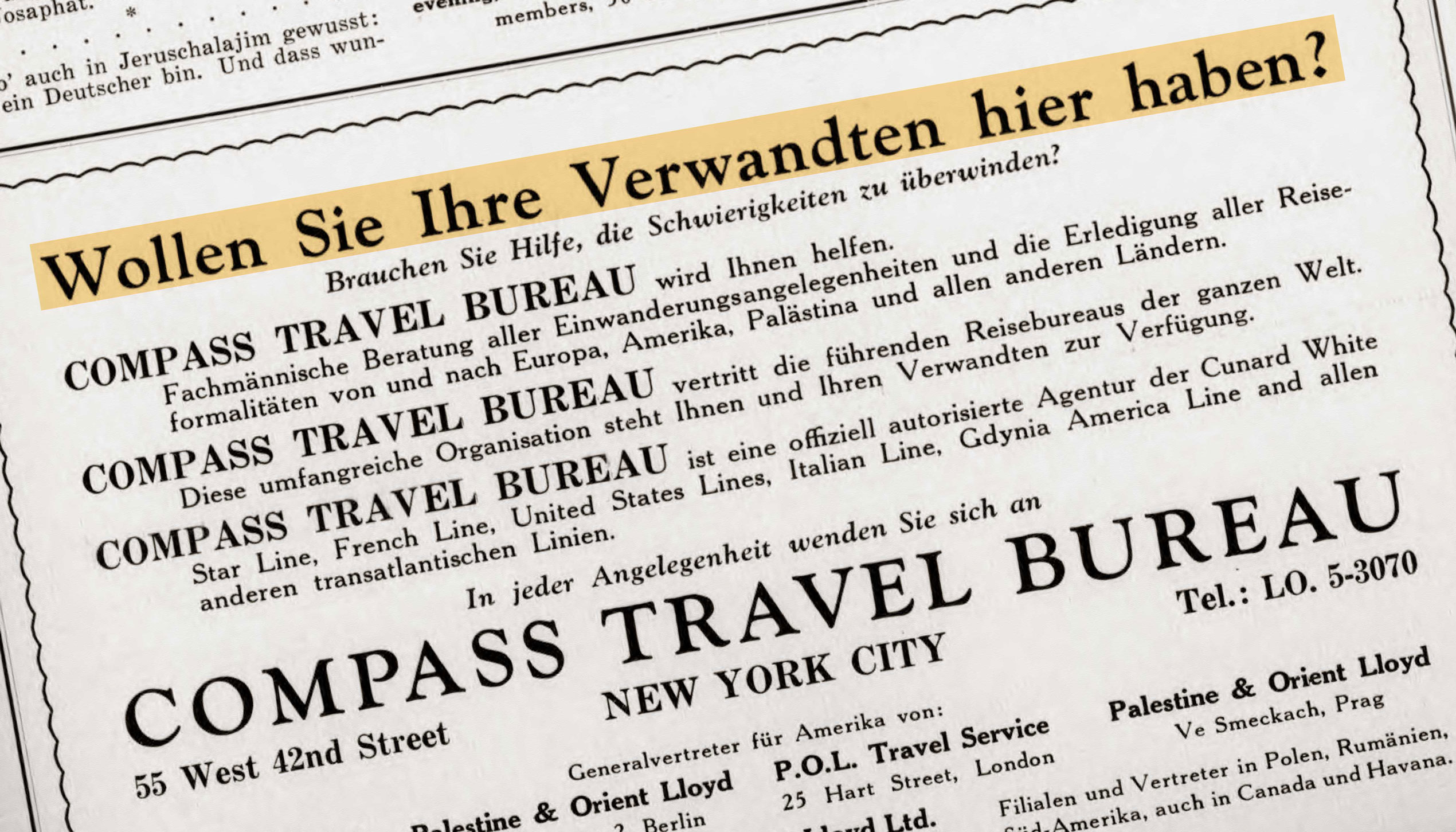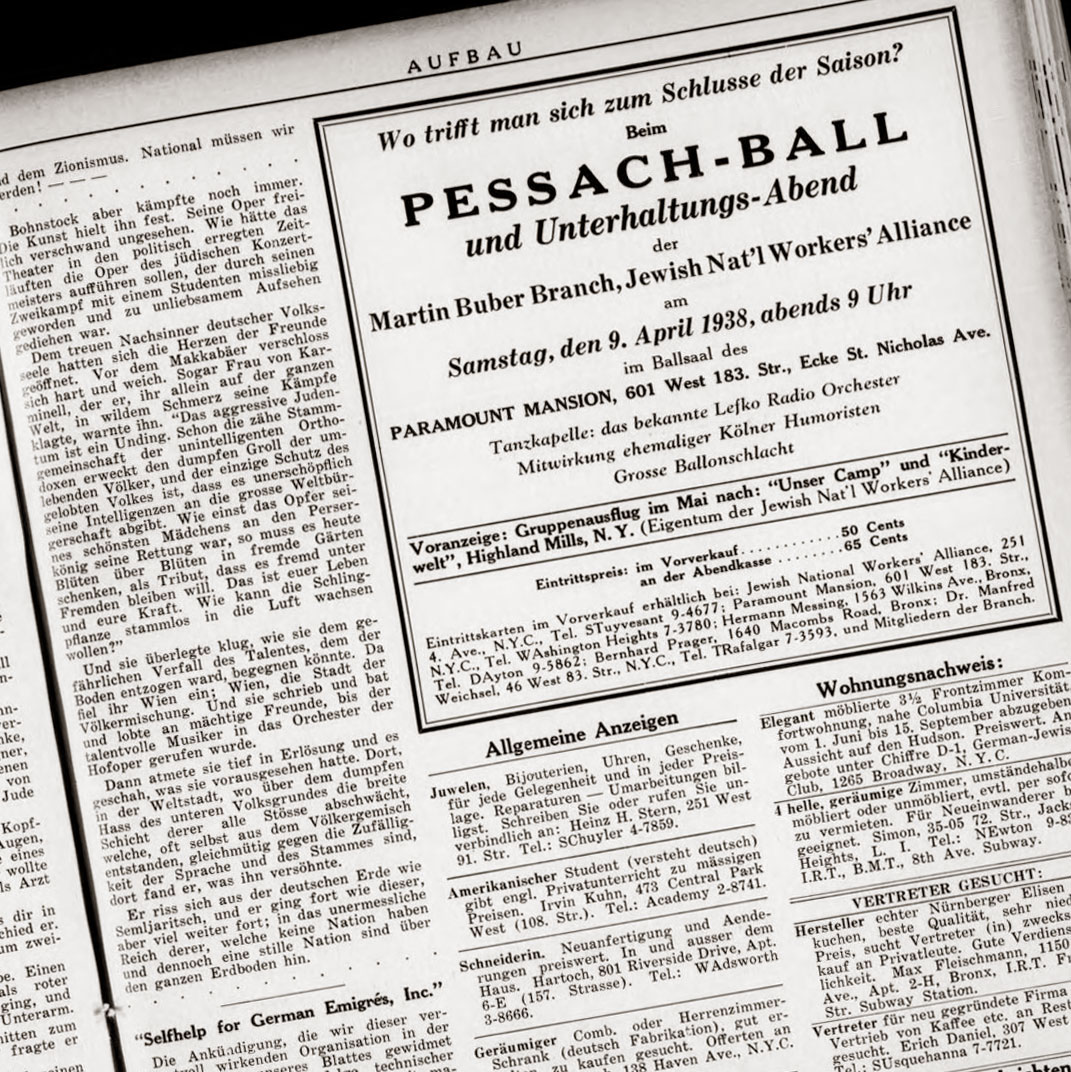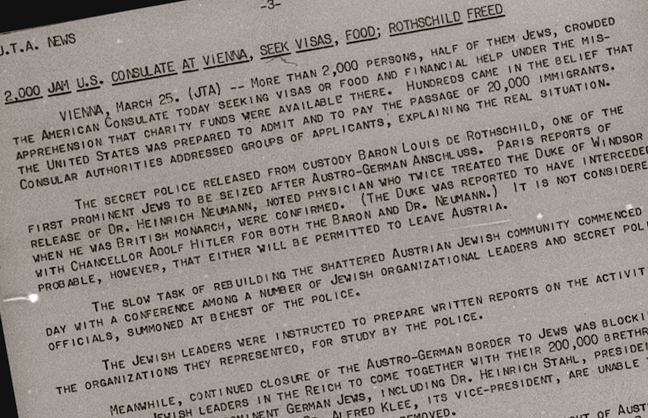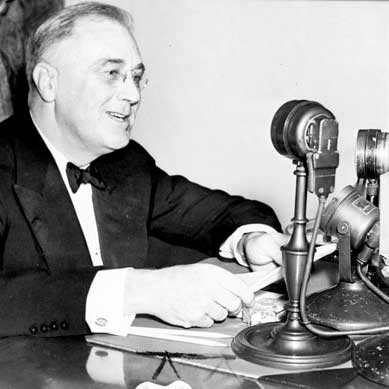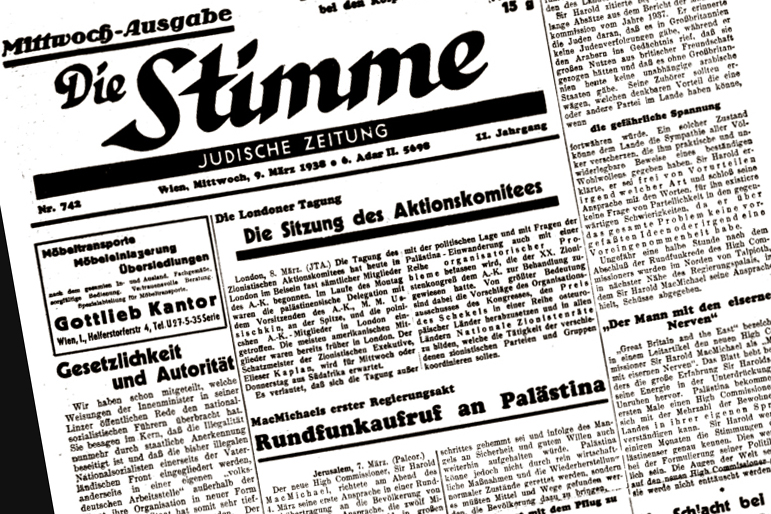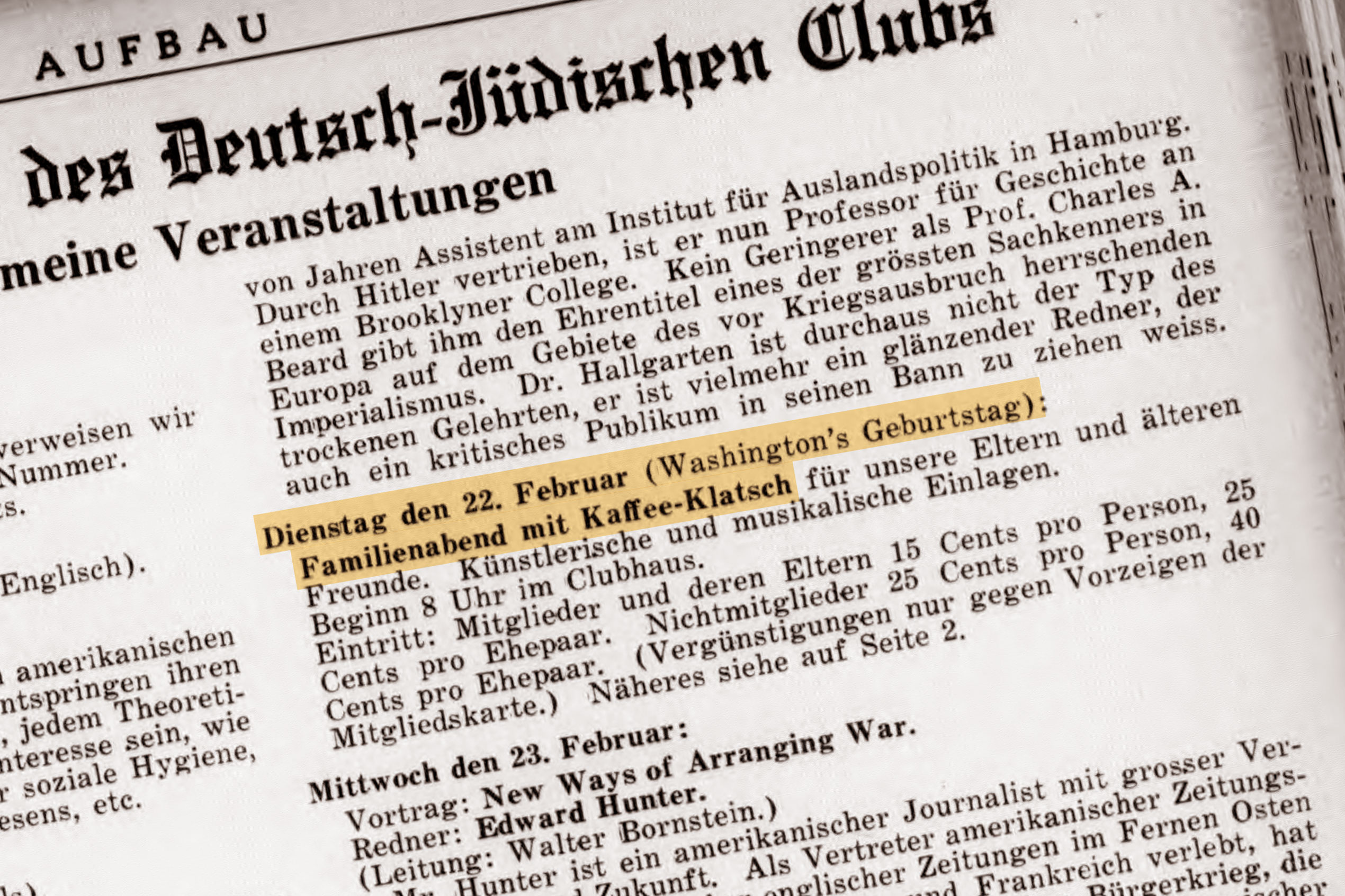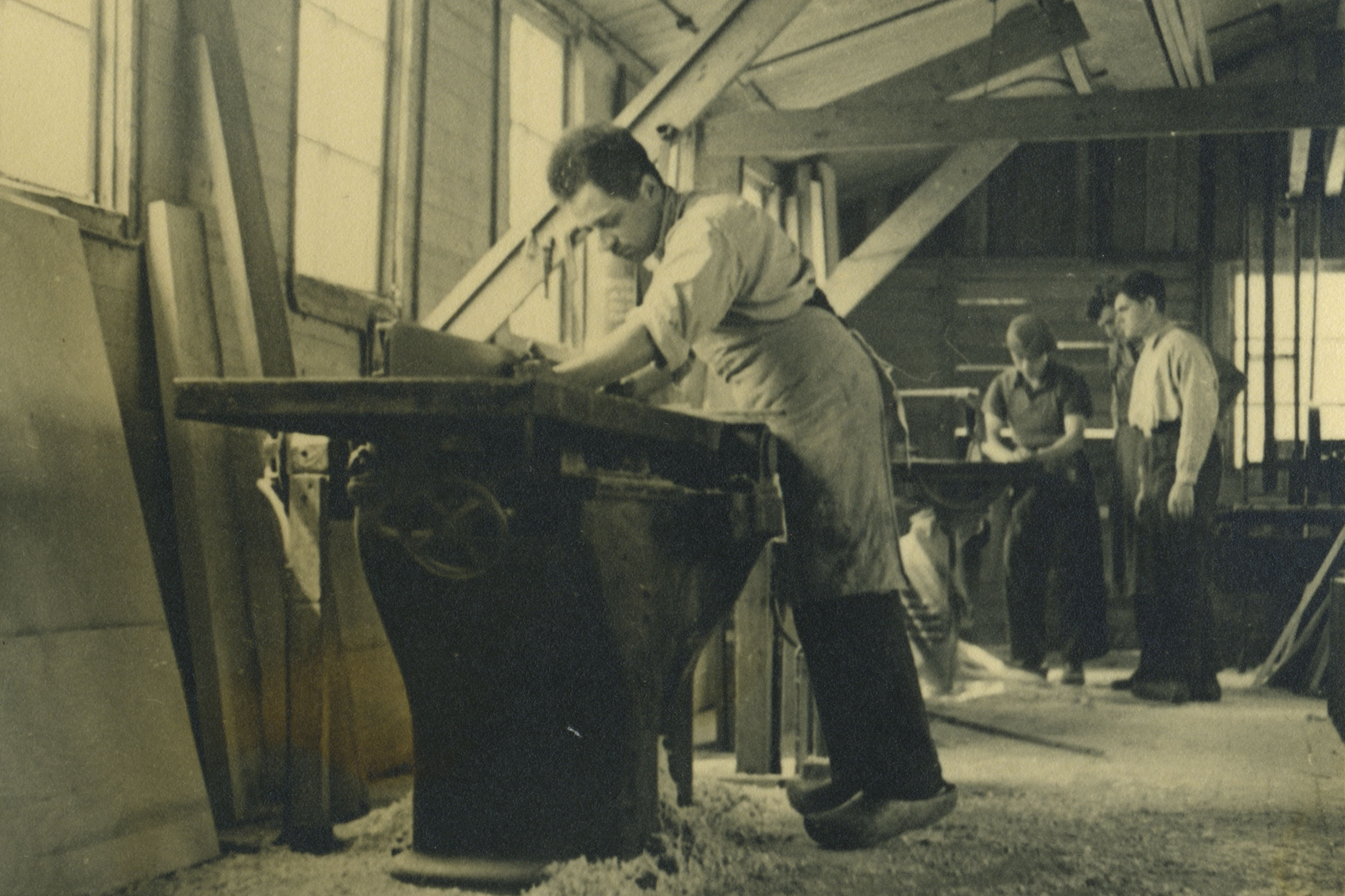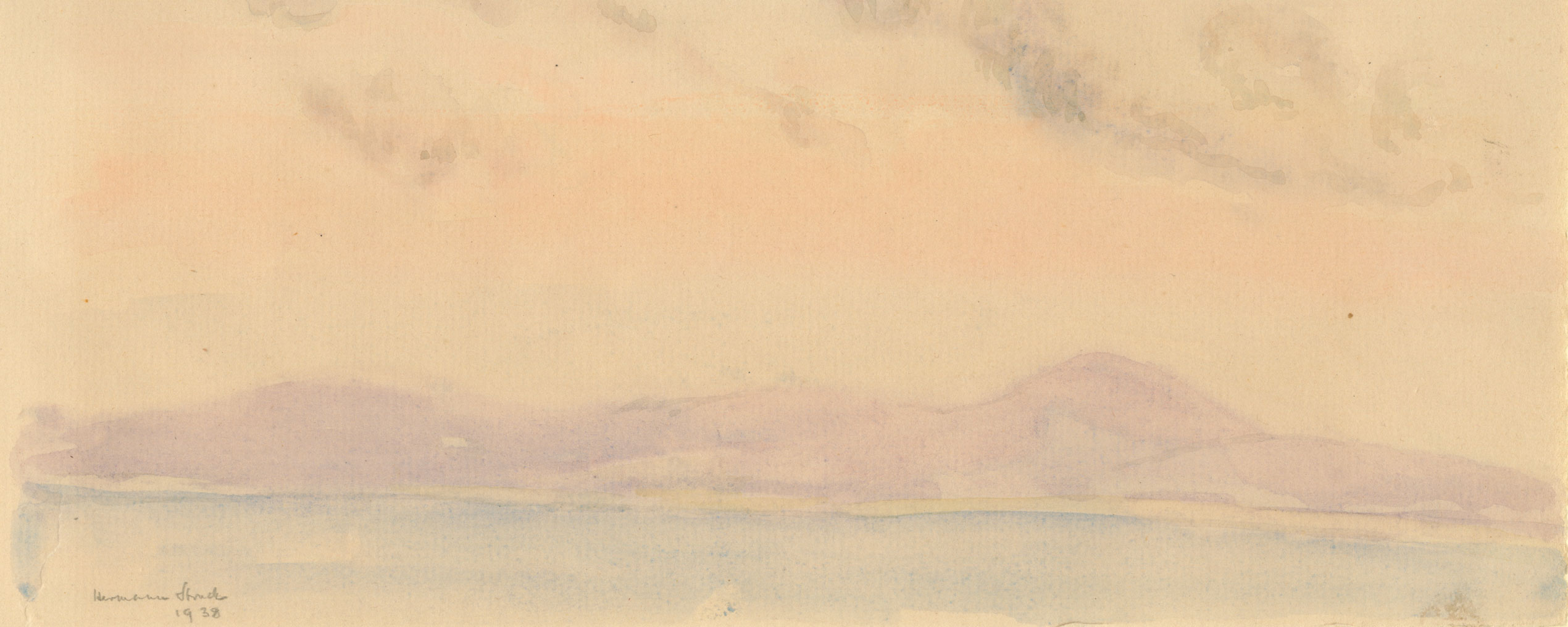Evicted from Red Vienna
Expelled from public housing, rejected by Swiss immigration
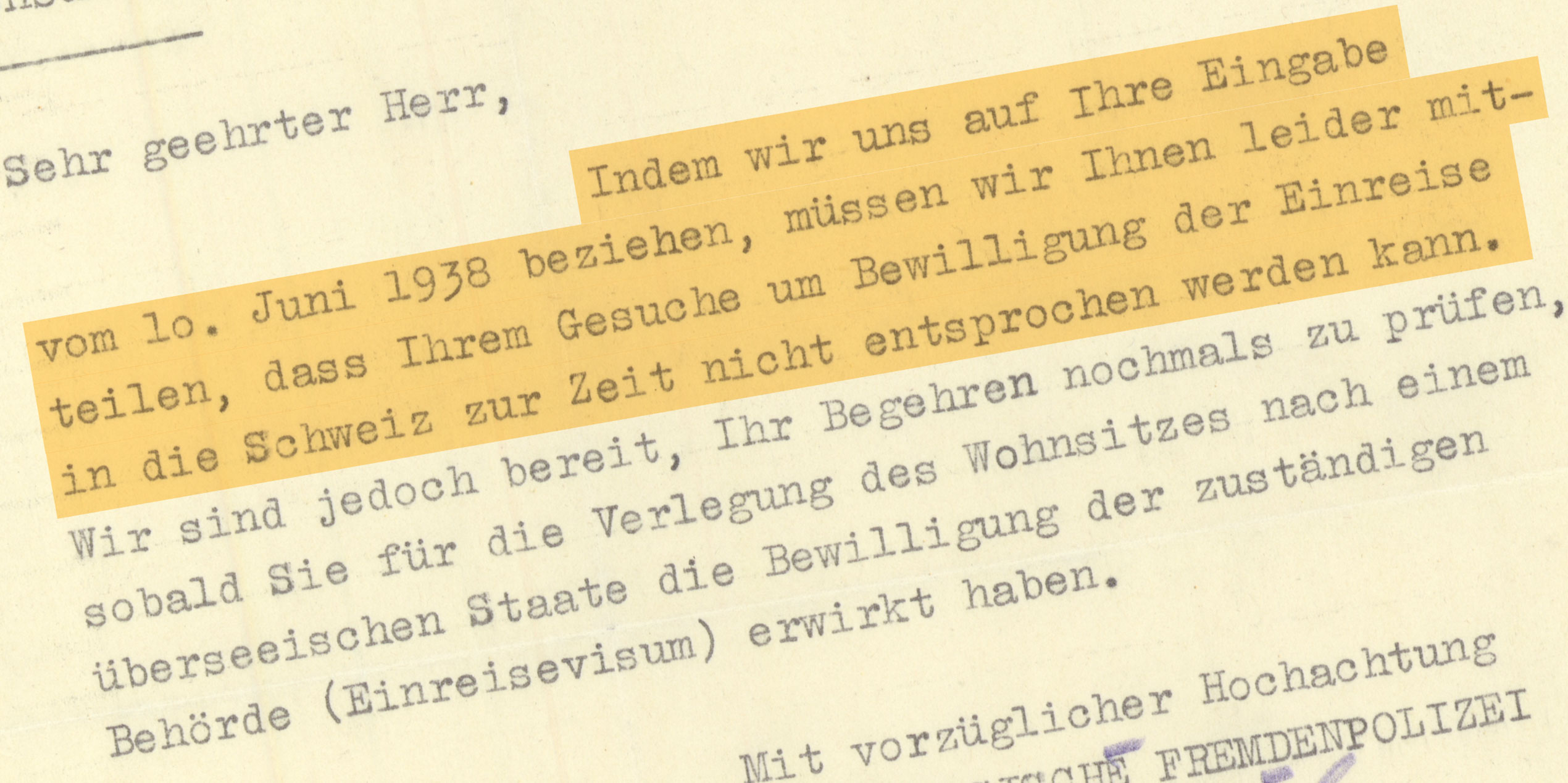
“In response to your application dated June 10, 1938, we regret to inform you that your request for permission to enter Switzerland cannot be granted at the present time.”
Bern/Vienna
For a dyed-in-the-wool social democrat like the journalist, translator and writer Maurus (Moritz) Mezei, the changes that quickly took hold in Austria after the country’s unimpeded annexation by Nazi Germany must have been doubly troubling. During the period known as “Red Vienna,” the first-ever period of democratic rule in the city from 1918 to 1934, the Mezei family had moved to the “Karl-Marx-Hof,” a public housing project. Starting in 1938, “non-Aryan” families, including the Mezeis, were threatened with expulsion from the compound. Tenant protections initially remained in place for Jews, but they no longer applied to public housing. On June 10, Mezei had applied for immigration to Switzerland, but the reply, written on July 14, was negative. Only if he was to procure an immigration visa from a country overseas would Swiss immigration authorities reconsider his case and possibly grant temporary asylum.
SOURCE
Institution:
Original:
Letter from the Swiss Federal Immigration Police ; Inv. No. 20991/ 26



